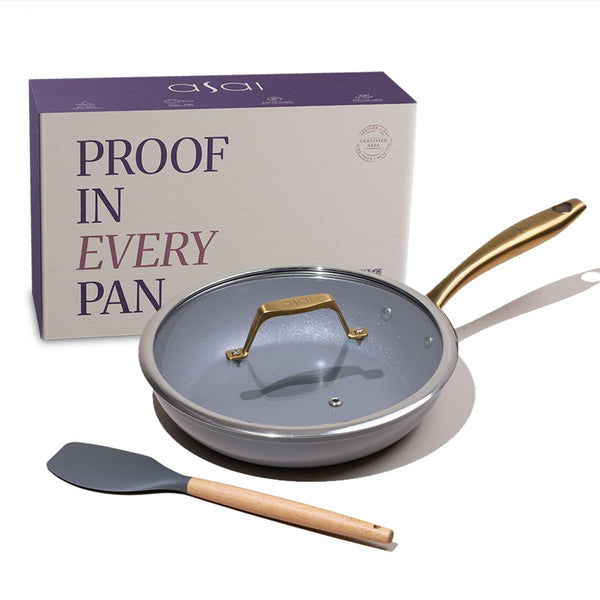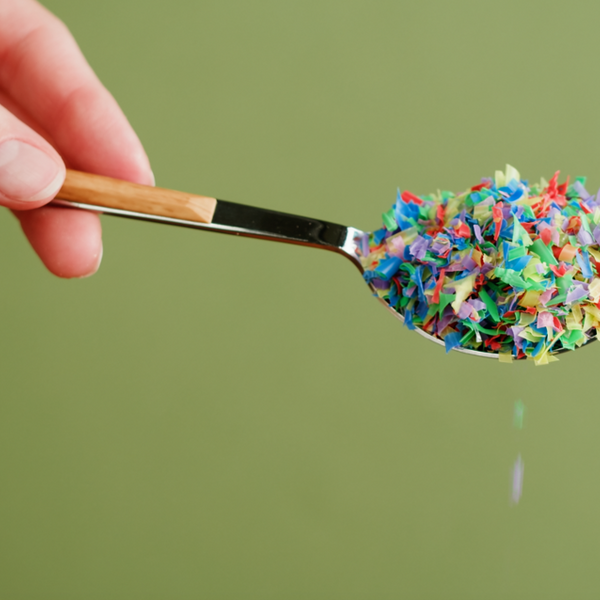|
It was one of those ordinary evenings in May 2024. The sharp, unmistakable smell of something unpleasant welcomed me as I walked into the kitchen. What was my first reaction? Perhaps the curry was scorched, or the plastic handle of a pan was melting. But our cook looked up casually and said, “Bas pan garam ho gaya, sabzi daalna bhool gayi.” It was just an empty pan. Overheated. There was no food, no fire, just fumes. I couldn’t shake the moment off. Was this smell normal? Is this smell safe? What were we breathing in? That night, like any concerned mom and avid Googler, I immersed myself in a deep dive into research. And I didn’t resurface for weeks. I watched documentaries, read scientific journals, and deep-dived into blogs, interviews, and Reddit threads. I learnt about PTFE, PFOA, and PFAS—chemicals in everyday nonstick cookware. I found out how quickly Teflon can start breaking down (just two minutes on a standard gas hob). I read that a worn-out nonstick pan could release over 2 million microplastics per year. And the worst part? These were pans we were still using at home. One of the distinct memories I have of this scene from Dark Waters – a documentary starring Mark Ruffalo talking about how PTFE or Teflon was born. It made me sick. |
That discovery made me discard all of our nonstick pans. What disturbed me most was the contradiction: I was buying the cleanest, organic, cold-pressed, chemical-free food I could find—only to cook it in something that might be undoing all of it. Even the “safer” options—stainless steel and cast iron—came with their own set of issues like nickel and chromium leaching, rust, weight, and high maintenance. For busy households, for our cooks, for multitasking moms and cook didi’s in kitchens, they just weren’t practical.
And yet, no one was raising the alarm.
The Bigger Problem
What shocked me wasn’t just the science—it was the silence. We obsess over ingredient labels on almond milk and sugar-free ice creams but rarely question the surface our food touches every single day. Harmful cookware has quietly become a part of our kitchens. A scratched nonstick pan? We keep using it. That old aluminium kadhai? Still going strong—because Mom passed it down. A plastic container in the microwave? Happens all the time. Somewhere along the way, we stopped asking, Is this safe?
I was shocked to learn that if you overheat a nonstick pan while a pet bird is present in the room, the fumes could potentially kill the bird in a matter of few hrs to days.. That’s how toxic some of these materials are. Why aren’t we told this?
But before jumping into solutions, I started with questions: What does my kitchen need? What does my cook need? What do millions of Indian families need? We cook chillas, dosas, biryani, tadka, paranthas, seared meats, and sabzis in the same space. We want non-stick functionality, but we also want low-oil cooking, quick cleanup, and something light and convenient for everyday multitasking.
Choosing Ceramic
In my research, ceramic cookware kept coming up—naturally nonstick, safe, and easy to clean. But I was skeptical. If it was truly effective, might there be a reason it isn't more prevalent in India?
I imported some of the “best-rated” ceramic pans from around the world. Some were good, some weren’t—but most didn’t work well with Indian cooking styles. So I decided to test the material myself. I had it lab-checked myself. It came back free of toxins and heavy metals and could withstand our cooking methods. That's when I realised I'd found a cornerstone for Asai. That was the pivotal moment. Ceramic wasn’t just a marketing gimmick. It was a real, credible option. But it needed to be re-engineered for our Indian kitchens.
The Making of Asai
With over 15 years of experience in consumer brands and category building, I leaned into what I knew best—listening. I met 80+ families, spoke with real cooks, and surveyed 300+ households. I wanted to know the smallest details that irritated them about their cookware. What was missing? What needed fixing?
What became even clearer through our conversations was this: cookware brands had rarely considered the realities of Indian kitchens. The rhythm, the variety, the intensity of our daily cooking—none of it was factored in. We sauté, steam, fry, flip, and pressure-cook—all in quick succession. The cookware we need has to keep up. It should be nimble, toxin-free, and easy to maintain. And above all, it should work with us, not against us.
So I assembled a passionate team—material scientists to rethink coating integrity, design engineers to build safer handles, and home chefs across cities to test every use case. Our cook, Sarita didi, ran daily tests in the chaos of our kitchen. We made 27 prototypes, flipped 900+ dosas, chilla, scrambled 500+ eggs, and experimented with countless veggie stir fries and meat sautés.
We even developed our own handles—because the ones available either overheated or weren’t well balanced. There were moments of frustration, burnt batches, and countless adjustments. But we eventually got it right.
Then there was colour. We played with Pantone cards, glazes, and swatches to create cookware that not only performed well but also looked joyful on your stove.
My favourite moments
Some of my favourite moments didn't happen during partner calls or launch prep. These moments have come from women across the country who have texted me:
"My son only cooks in this pan now—he calls it his 'safe pan'."
"I finally made dosas without them sticking!"
"I don't know what you did, but my pancakes have never been this fluffy.
That's when I knew we weren't just creating pans. We are creating peace of mind.
The Future of Indian Kitchens
Asai is based on radical transparency. Every batch is lab-tested, with over 25+ lab tests that checks for everything one could from a health & safety perspective, beside the usually leaching, heat durability, and coating integrity. You can obtain the lab results for your pan. Read it. Consider it. Then use it. You have the right to know what your food has touched before it reaches your plate.
In five years, I want Asai to grow beyond cookware and become a movement for safer kitchens. I want every Indian household to understand what PFAS is. I want people to question what their cookware is made of. I want "safe, non-toxic cookware" to be the standard, not a niche. You shouldn't have to choose between easy and safe cooking..












